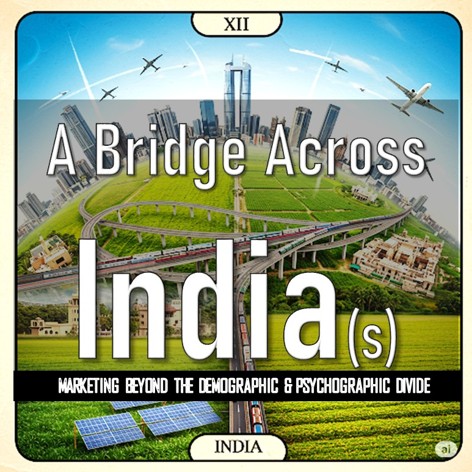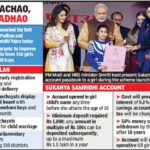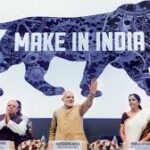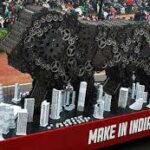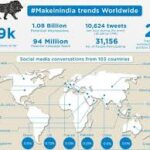War and Peace
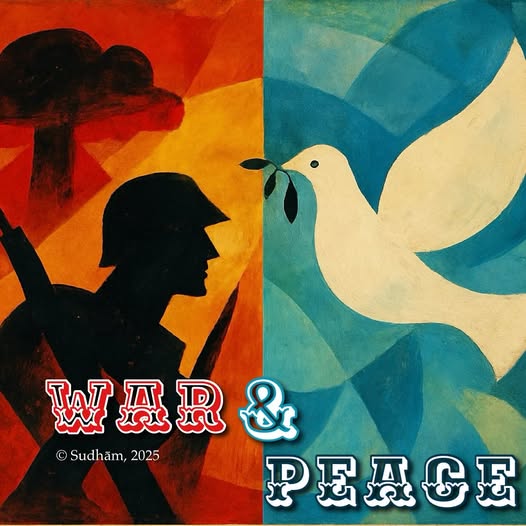
One swallow they say
does not a summer make
The battle’s over
but the war’s far from done
Fight to the finish
is what it’s going to take
The theatres now change
we’ve only just begun
The curtains shall continue
to rise and fall
Life’s not going to let up
nor retreat with tail between legs
To hit back hard or harder
is not choice it’s a judgement call
Victory is not sweet
till the vanquished for mercy begs
Keep your friends close
and your enemies closer
Trust is indeed hard to gain
and is easier lost
Halcyon days may be an illusion
when no agreement is kosher
Peace is a necessity
it most certainly has a costA Bridge Across India(s)
Marketing beyond the Demographic and Psychographic Divide
Context:
I recently read three articles in one of the newspapers. One that spoke about the income disparity that exists in India and if I may add, one that is widening. Combined with another article they tried to make sense of the income classes in India. A third article a few days later, gave data pertaining to education and economic affluence. Leaving the socialist aspects aside, the averages as usual by themselves are misleading and deceptive.
Exhibit A:
According to a statistic (source or basis not explicitly mentioned by the report) an income of Rs2.9Lakhs per annum puts one into the Top 10% earners and to enter the Top 1% an income of Rs.20.7Lakhs per annum shall suffice. However, to get into the Top 0.1% you need an annual income of Rs.2.25Crores. The comparable numbers in terms of accumulated wealth or net assets for these brackets are Rs.21Lakhs and Rs.82Lakhs for the Top 10% and Top 1% respectively.
Exhibit B:
The associated article in the same newspaper quoted data from 2 reports namely the Indus Valley Report 2025 and the Knight Frank Wealth Report 2025. The Indus Valley Report proposes the concept of 3 Indias based on income categories
- India 1 – Representing the wealthiest 10% of the population who have a per capita income of USD15000 (Rs12.8Lakhs) comprising of approximately 30MN households
- India 2 – 23% of population with per capita income of USD3000 (Rs.2.5Lakhs); ~70MN households
- India 3 – 67% of population with per capita income of USD1000 (Rs.85Thousand); ~200MN households
Exhibit C:
The third article looked at the social caste construct and how it impacted education levels. Education it opined and I agree is perhaps the biggest factor in inter-generational upward mobility. The article also referred to data gathered by the NSSO.
Premise:
Looking at these numbers set the marketer in me thinking about what lies beyond these income/wealth numbers and how we as a tribe use the demographic data for creating/defining our target audiences. The thought then led to a further reading and assimilation of data from a wider range of articles and reports.
What also found its way into my thinking were my recent experiences with studying Consumer Archetypes and my interactions with a vast set of consumers trying to understand their aspirations and motivations.
While by no means exhaustive or even pretending to be scholarly my notes as I made them threw up a pattern that potentially can serve as a de facto framework for marketing to Indian consumers based on 3 broad dimensions:
- Geographic
- Economic and
- Psychographic
A combination of these dimensions help us understand the 4As namely Availability, Affordability, Accessibility and Acceptability of Products and Services that we marketers aim to influence and promote.
Marketing is essential for raising awareness, building trust, and encouraging the use of services and products.
From the point of view of the Geographic Divide i.e. Urban and Rural, inclusive marketing involves more than just targeting rural audiences—it requires a thoughtful understanding of their distinct challenges and cultural backgrounds to create meaningful connections and promote the adoption.
Nielsen reports provide important insights into overall consumer trends, spending patterns, and the key role affordability plays in shaping consumer behavior across different groups. With much of India’s economic activity and spending power concentrated in urban areas, a targeted approach is essential to effectively understand and engage rural markets through customized marketing strategies.
- Rural consumers are generally more price-sensitive and favor local brands that meet their needs and budget.
- Urban consumers are more brand-conscious and are influenced by national/international brands and media trends.
- Rural families are often larger, with centralized decision-making by one person.
- Urban families are usually smaller and nuclear, with shared decision-making between male and female members.
On the Economic dimension, the narrowing of the consumption – expenditure gap between urban and rural areas, coupled with the increasing inclination towards non-food items in rural spending, signifies an expanding market with evolving needs and preferences. Marketers who recognize this burgeoning potential and tailor their offerings to meet these specific demands are poised for success.
Fueled by rising income levels and various government support initiatives, the purchasing power of rural consumers is on an upward trajectory.
Growing access whether in terms of transport infrastructure paving access to higher order necessities such as health, education or to information and awareness courtesy the digital access that the penetration of mobile phones and internet have meant higher aspirations.
Believe it or not the axis, however low it might have been has considerably shifted up and right over the last 2 decades. Therefore, understanding the Psychographic aspect of the change is an imperative. Unfortunately, as old school as I may sound, data alone cannot get marketers across the line.
There is no substitute to first hand exposure to the consumer. A marketer worth her salt cannot, dare I say should not compromise on living a day in the life of the consumer(s) they aspire to market to. Multiple times over, if need be.
Bridging the demographic and the psychographic divide in India necessitates a strategic and sustained commitment to understanding and effectively serving the unique needs of different archetypal consumer profiles that emerge based on the dimensions and factors outlined.
Archetypes
Debatable as they may (and intentionally so) the broad archetypes that emerged according to my notes are as below:
The Rulers
The prime movers and shakers if not already who-is-who these are folks who are heading there or at the very least striving to. They are setting trends and shaping narratives – social, political and economic as they go along. The Rulers are the HAVES.
The Controllers
They are the country cousins of the archetype just above. They have POWER and do not hesitate to wield it. They are always in-step or at worst one behind with what is current and trending. Social superiority is essential. The Controllers are the MUST HAVES.
The Aspirers
Their trajectory is pointing upwards and their ambitions are keeping it there. They have SKILL and KNOWLEDGE to get where they want to. They are the difference between a fad and trend! They are the WANTS.
The Dreamers
They are doing well for themselves though things could always be better. The dreamers are happy with the fact that it is possible for them to be better. However, ambition takes back seat for sentimental reasons or contentment or pragmatism. They are the COULD BES’.
The Warriors
They are inching towards a better life for themselves. Every day is a battle they fight and WIN. Bruised and battered they may be but they wear their battle scars with pride. Making ends meet is not the goal it is something they have to do to get to it. The Warriors are a tribe that is armed with a can do spirit but they are the MUST DOS’.
The Survivors
They have limitations, severe ones. The absence of privilege of any sort is what defines them. Yes, they depend on others but that is just the cards they have been dealt. There is a desire to change their future and rid themselves of the baggage of the past (socio-economic). They are the NEEDS.
3×2 India Framework
This proposal based on a top-level analysis of consumer psychographics and consumption patterns unveils distinct differences between urban and rural populations across the economic divide. The image that follows tries to give context to the archetypes on 2 axes based on Geographic and Financial. This placement of consumer types in context underlines the need for tailored marketing strategies across the archetypes.
Key strategies for success include prioritizing localized product offerings and pricing, building robust distribution networks that penetrate remote areas, utilizing local languages and culturally relevant messaging, and fostering trust through transparency and community engagement.
Conclusion
The increasing reach of digital platforms presents significant opportunities, but addressing the challenges of connectivity and digital literacy requires a hybrid approach that integrates digital outreach with strong community-based initiatives.
There are some useful and celebrated case studies in the form of Project Shakti and e-Choupal that demonstrate that a deep understanding of the local context and a willingness to adapt strategies are fundamental to achieving meaningful impact in rural India. However, these need to be perhaps revisited through the lens of economic disparities too.
Ultimately, bridging the divide requires a long-term commitment from businesses in general and more specifically marketers along with other stakeholders to create a more inclusive and holistic marketing construct that speaks to all consumer types.
Ready?!
हमारे राम (Humare Ram)
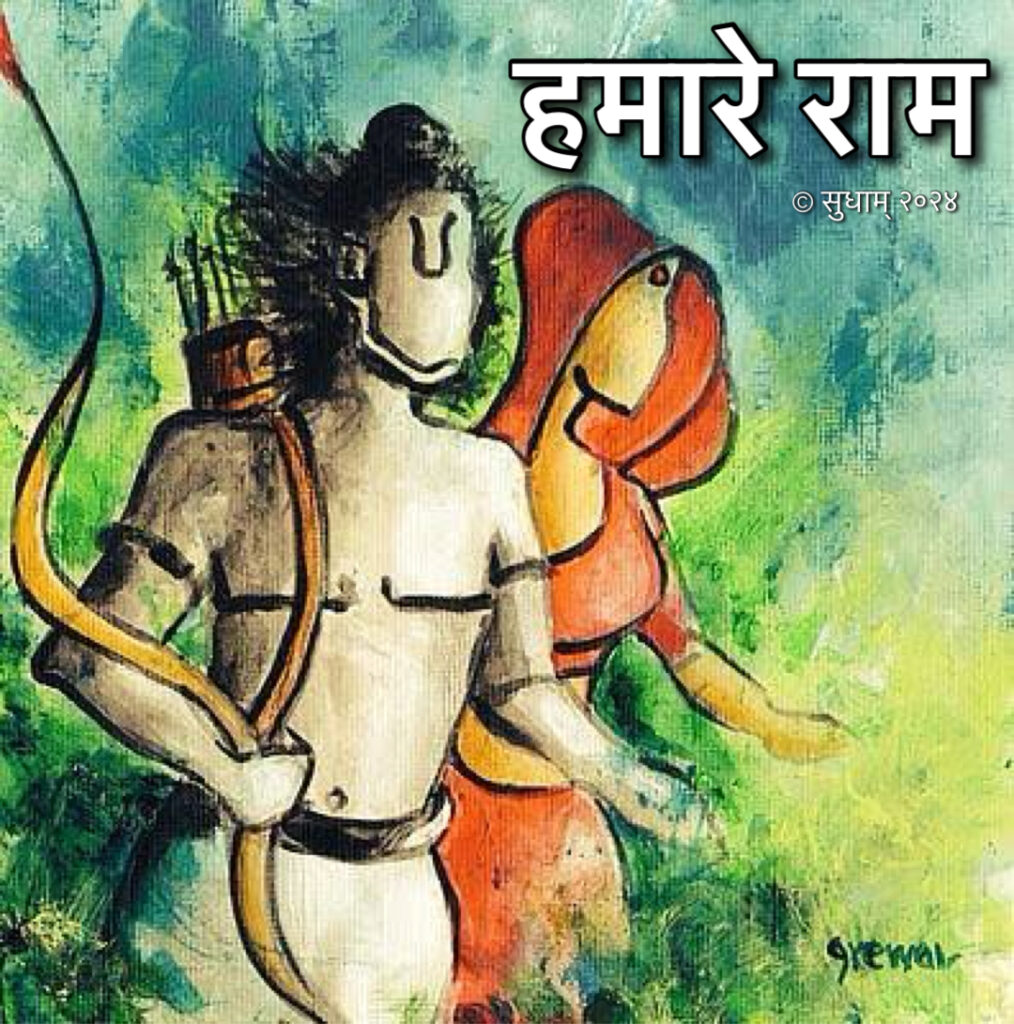
Painting Credit & Courtesy: Sukhpal Grewal श्री राम कहो, रामचंद्र कहो कोई भजे सियाराम है कोई कहे पुरुषोत्तम उनको मानो तो स्वयं नारायण है कुछ तो बात होगी ही न उनमें की राम भावना युगों से प्रचलित है सहस्रों हैं वर्णन उनके, सैंकड़ो हैं गाथाएँ जो राम हैं हमारे वह तो हर कण में रमित हैं आज सज रहा शहर मोहल्ला सजी सजी हर गली भी है लहरा रही हनुमान पताका श्री राम लहर जो चली है जलेंगे आज दीप घर घर में पौष में मन रही दिवाली है प्रस्थापित होंगे राम लल्ला अवध में हर मन प्रफुल्लित और आभारी है पुनः निर्मित हो रहा है जो केवल मंदिर नहीं स्वाभिमान है यह किसी धर्म संप्रदाय की विजय नहीं धरोहर हैं हम जिसकी उस सभ्यता का उत्थान है हो सम्मान जहाँ हर नर का सम्मानित जहाँ हर नारी है प्रेरित हो जो राम राज्य से उस भारत की रचना ज़िम्मेदारी है राम आस्था राम विश्वास राम जीवन की सीख हैं राम रामत्व रम्य रमणीय राम इस संस्कृति के प्रतीक हैं कोई कहे पुरुषोत्तम उनको मानो तो स्वयं नारायण है श्री राम कहो, रामचंद्र कहो कोई भजे सियाराम है
Unstoppable
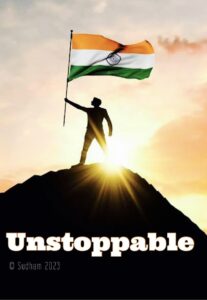
My nation stands at the precipice A fledgling ready to leave the perch Yet a maven helming a new world A beacon of a wise and vibrant past A billion hopes ready to take wing Aspirations waiting to fly high A populace with a newfound voice Diaspora that has found the spotlight You know you can reach where you’re going Once you know where you started from India today is an idea whose time has come Our tryst with our destiny has only just begun
Where the Mind is Without Fear
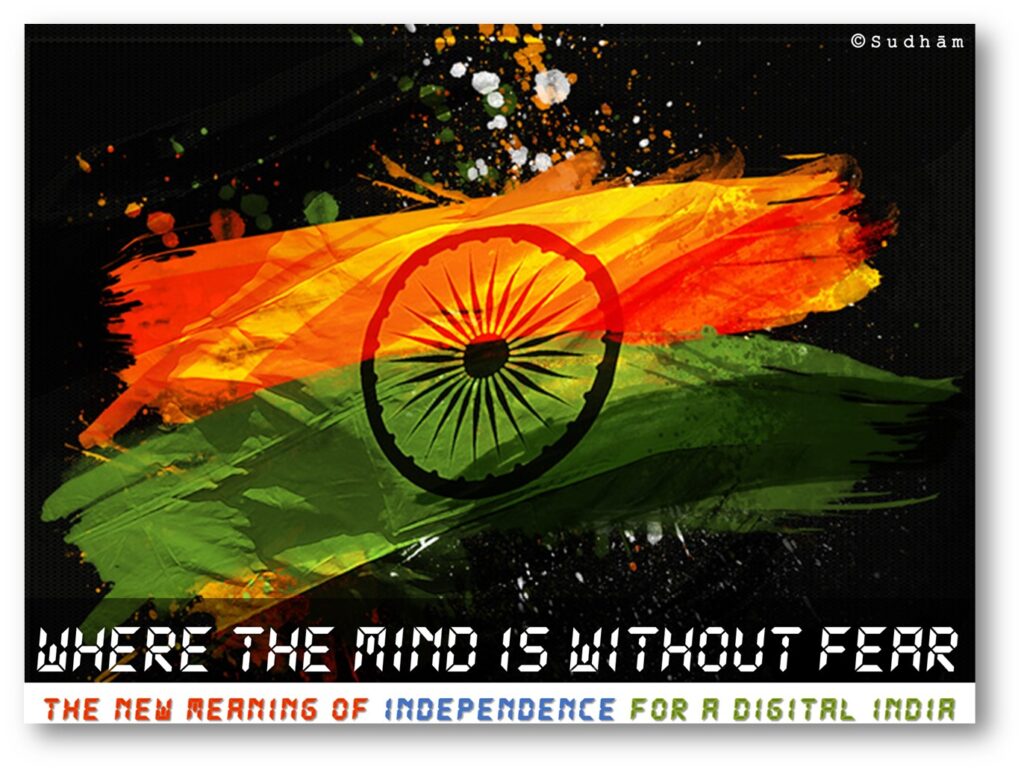
As I write this post on the occassion of Independence Day, the patriotic fervour has been higher than I have ever seen in my conscious years. In an age where the distance between thought to tweet is 140 characters and an entire nation can be bridged with seven degrees of WhatsApp group separation; thoughts and opinions can travel….fast.
69 long years since India became an independent nation. Time enough for an entire generation to pass. Today’s senior citizens are not those who fought during the Independence movement. We have a Prime Minister who was born in independent India. For a large part of the population today the mention of Vande Matram evokes images of the Bharat Bala produced A.R. Rahman rendered Maa Tujhe Salaam and not the original lyrics penned by
Bankim Chandra Chatterjee that used to float liltingly over the air waves every morning and perhaps still do.The symbols of Digital India’s pride are different from that of the previous generation. The binding glue of today’s India is the mobile phone. If there is one asset that is availble in a majority of the 200 million households which have 996 million mobile subscribers it is the mobile phone and with 280 million of them connected to the internet!
No other medium today can promise this kind of reach or penetration. The various messengers services have woven a web where dissemination of information happens real time as it happens.
Rural-urban, literate-illiterate, the haves- the havenots, young-old there is no chasm that is not bridged today in terms of a common platform of presence. Today, more that ever before the average Indian speaks his mind, airs his opinions and views to the world at large, he tweets, blogs, creates and forwards WhatsApp messages. Today support is not silent, anonymity is not a required condition for going anti-establishment or for that matter anti anything.
The growing confidence of being one of the faces in the crowd and not afraid of being seen as one. Being a part of an uprising or a movement much akin to the crowds that were a part of the independence movement. Only difference, they now do it with a few key punches or screen touches on their phones. In the comfort of their homes or while on the move.
The dream of using the mobile as a vehicle for upliftment, progress, betterment (pick a term of your choice) is not a distant one. The first step of embracing change has been taken and how!!
Today, more than ever before, we really can understand the meaning of Rabindranath Tagore’s immortal words and maybe, just maybe, hope to make our tryst with destiny! To close I quote the poem that inspired this post.
Where the mind is without fear and the head is held high
Gurudev Rabindranath Tagore
Where knowledge is free
Where the world has not been broken up into fragments
By narrow domestic walls
Where words come out from the depth of truth
Where tireless striving stretches its arms towards perfection
Where the clear stream of reason has not lost its way
Into the dreary desert sand of dead habit
Where the mind is led forward by thee
Into ever-widening thought and action
Into that heaven of freedom, my Father, let my country awakeWishing that all of us find and revel in the greatest independence there can be… THE FREE MIND!!
विश्वास का दीया
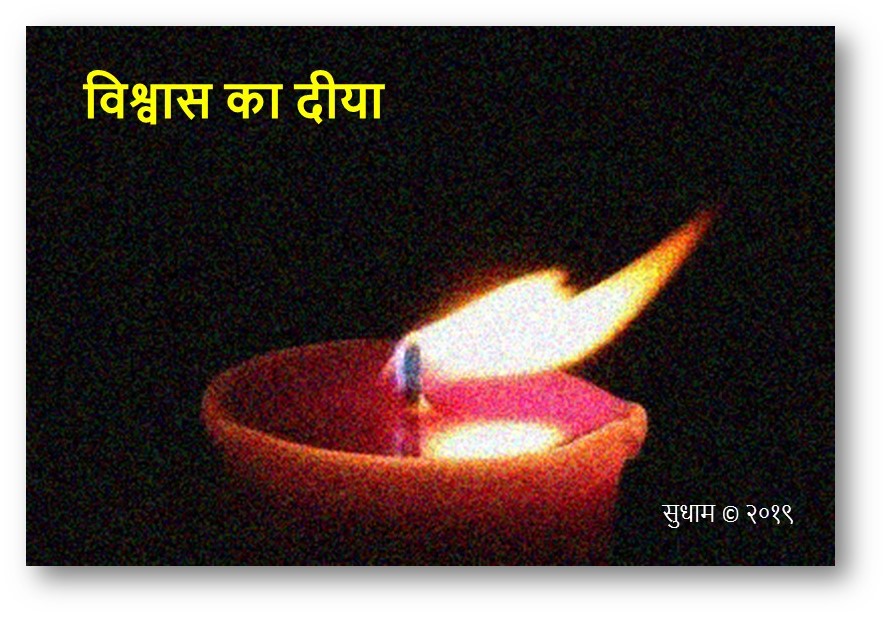
खुली हवा है वो आज़ादी की शीतल करे जो जब मध्धम चले एक ओर जो हो हावी तो बने आँधी कैसे तूफ़ानों में कोई दीया जले अलगाव की चिंगारी कहीं दामन ना लगे मिल के बढ़ने के लिए दिल भी बड़े रखने होंगे दूर अभी हैं वो मंज़िलें जहाँ ख़ुशहाली मिले कटे तने से चलने से कैसे ये रास्ते तय होंगे इरादे नेक वही जो अमल में आएँ कथनी और करनी को अब मिलाना है तेरे मेरे के ये फ़ासले चलो मिल मिटाएँ विश्वास लेना देना नहीं कमाना है
sedition, lies & video clips: where has objectivity gone?

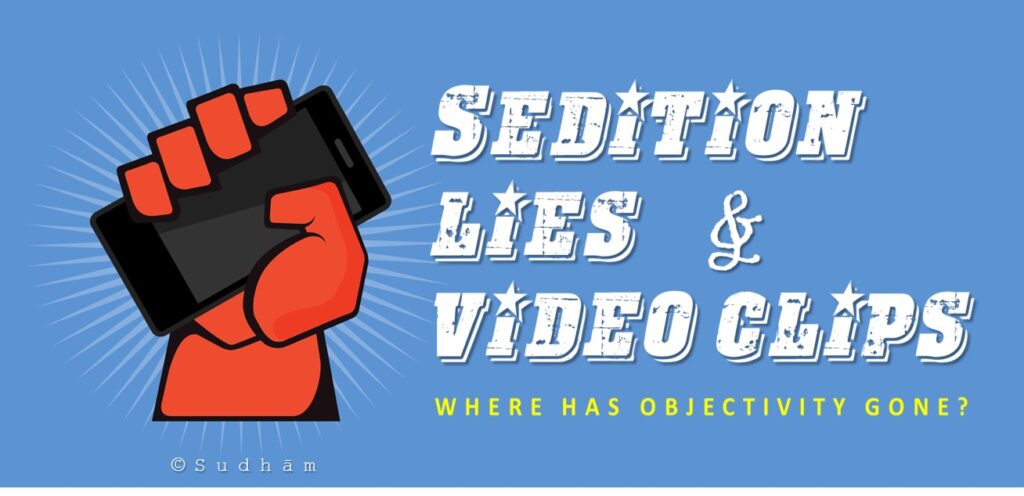
I am your average Joe or should I say Janardhan. The middle-aged, middle-class guy who pays his taxes on time, spends hours stuck in traffic jams, generally apolitical, opinionated a few times and an optimist who believes that the larger good is good enough to prevail.
I write this since I am pained by the narrative of doom that seems to be enveloping this country’s psyche. Most people like me have a voice courtesy social media. Be it tweets, posts on Facebook or discussions in WhatsApp group my ilk has taken to expressing socio-political beliefs and views on events & happenings like fish to water. There are views, counter-views, opinions that get aired, debated and exchanged at the speed of thought.
It’s private yet public or vice-versa. These expressions often contain elements of pride or prejudice or angst; as misplaced or genuine as they may be. Those of us who have shunned social platforms and look at those who participate on them as souls needing redemption may just be having a quiet laugh. Let me assure you there is no escaping it. If it already hasn’t it will make way to your drawing room discussions. All of us are connected to “friends” in the real world too aren’t we?Question therefore is where the voices of reason are, is there really no middle-ground or is taking sides the new fad? I believe that at a subliminal level the sense of objectivity seems to be diminishing and that is my concern.A tsunami of communication on every issue seems to be drowning an individual’s capability to assimilate and formulate rational opinions. Today the long tail of communication means someone somewhere is still consuming it for the first time and should he/she choose to react to it socially it multiplies someone else’s consumption of the same communication. The result therefore is this continuum in which any fresh piece of communication or opinion just adds to the snowballing of what is already there. Then there is this auto-classification of people into Bhakts, AAPtards and a host of hash-tagged labels that get coined every second day to contend with.I for one do not want to fall prey to it and shall try my best to retain my sanity. Doesn’t mean I shall become a social media recluse, I am no ostrich.The World T20 is round the corner. Here’s a ball by ball account of my metro-social existence; my super-over of the events past 20 odd months and the way I played it:-
- BALL 1: The Acchey-Din Blitzkrieg: Sucker for it. Are we there yet? Hell no! But willing to wait.
- BALL 2: AAP ki Sarkar: Believer turned sceptic. Again, willing to wait.
- BALL 3: Modi the Globe-trotter: Reaching out much needed. So many of them, maybe not.
- BALL 4: My plate of food: Lay off! What I eat (or don’t eat) is my business.
- BALL 5: Rahul: Jaane bhi do yaaron
- BALL 6: Nationalism/Universities debate:
- Hyderabad University Suicide – Unfortunate. Abettors if any and whosoever must be tried and punished.
- Anti-India sloganeering at JNU- Unacceptable. Does it tantamount to sedition? Not sure about the law, its applicability or interpretation. That said, some exemplary punishment necessary.
That there is my humble take for all who care to know about what I (and I use that term as a collective here) think. And for those who don’t care good for you! So, here’s to objectivity and a balanced idea of India – one that is both yours and mine.
एक किताब की कहानी
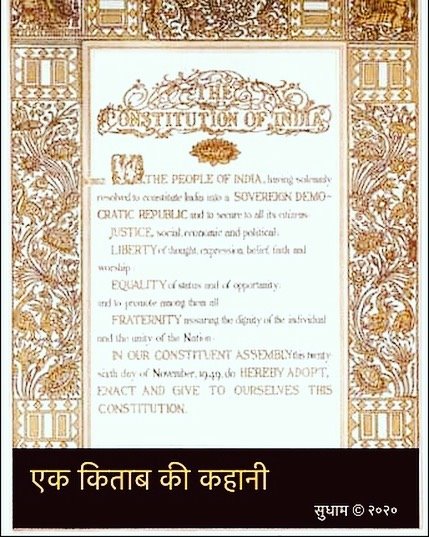
क्या बेवजह बढ़ रहें हैं ये क़ाफ़िले कौन सी है वो मंज़िल चल पड़े जिस रास्ते कुछ तो होगा मसला-ए-जुनून छिड़ गया है इंक़लाब जिस के वास्ते कितना और रुकें के जब होगी वो सुबह छीनी आज़ादी जिस लिए फ़िरंगी हाथ से रंजिशें तो तब भी उबल के उभरी थीं क़ीमत तो चुकायी लेकिन क्या सीखा सरहदें बाँट के सिकती रही है बिकती भी रहेगी सियासी रोटी थकते नहीं ये ले ले कर भूखे मज़्लूमों के नाम बनती भी हैं और गिराई भी जाती हैं सरकारें आज़माती है हक़-ए-जम्हूरियत जब अवाम हर कोई कहे मैं सही हूँ और वो ग़लत फ़िर दूर दूर खड़े हैं लोग आईन लिए हाथ में देर आयेगी पर समझ आयेगी ये बात यक़ीनन पन्ने बस अलहदा हैं लेकिन हैं उसी किताब के
Branded Nation: Are We Unwittingly Walking Into A Brand-trap?
In the aftermath of the 2014 elections, the Congress kept mentioning that it got blown away by BJP’s marketing blitzkrieg. It should not have come as a surprise to the Congress party though, since the direction of BJP’s strategic thinking was more or less set during A.B. Vajpayee’s tenure as the PM.
The failure of the India shining campaign made the Congress complacent and the BJP resilient. During the ten years they were away from power the BJP practiced and perfected the craft. Finally mounting the attack with its most potent weapon! The sustained digital presence that started with veteran leader L.K. Advani, the share of mind/conversation and something all marketers swear by – on-ground connect; all proved to be gold.
No doubt it has worked for BJP the political party and catapulted it into government. The think-tank reckons it might just work for the government as well.
A government publicizing its schemes and initiatives is nothing new. The Modi government in under an year has kicked off and launched several such schemes and initiatives with much fanfare.
A marked change from earlier has been the ‘Go to Market’. Each one of the initiatives has been supported with a well thought communication plan and activations. Whether it is the Swatch Bharat Abhiyan, the Make in India or the Pradhan Mantri Jan Dhan Yojna every element that could have been branded has been. There has also been a flurry of war cries, rallying cries and punch lines such “Minimum Government and Maximum Governance”, “No Red Tape, Only Red Carpet” etc.
The government needs to tread carefully in order not to fall into its own ‘Brand-trap’.
India as a nation has traditionally been a reluctant marketer and this new aggressive approach has been and should be accorded a cautious welcome both from within and from outside the country. After all, if one of the world’s largest markets has to get its rightful share of the investment pie the helmsmen need to do whatever it takes to catch the world’s eye. Having said that, as with any other product or service the product experience has to back the claim.
All marketing has an element of hyperbole in it. It is for the marketers to ensure that the product lives up to the promises that are made. Regardless of who and where ‘dissonance’ is a concept that all marketers need to be wary of. Few would disagree that in the current context brands, though created by marketers are ‘co-managed’ by the consumers. Therefore, while it is good to see the slick marketing plans for initiatives, it is also important to ensure that the surrounding ‘buzz’ and the ‘conversations’ about need to be managed better and need to have a positive ‘slant’.
As someone once said “A hen lays an egg and cackles, the catfish lays a million without making a sound. We all know whose eggs we eat!”
Bounce

